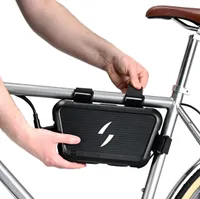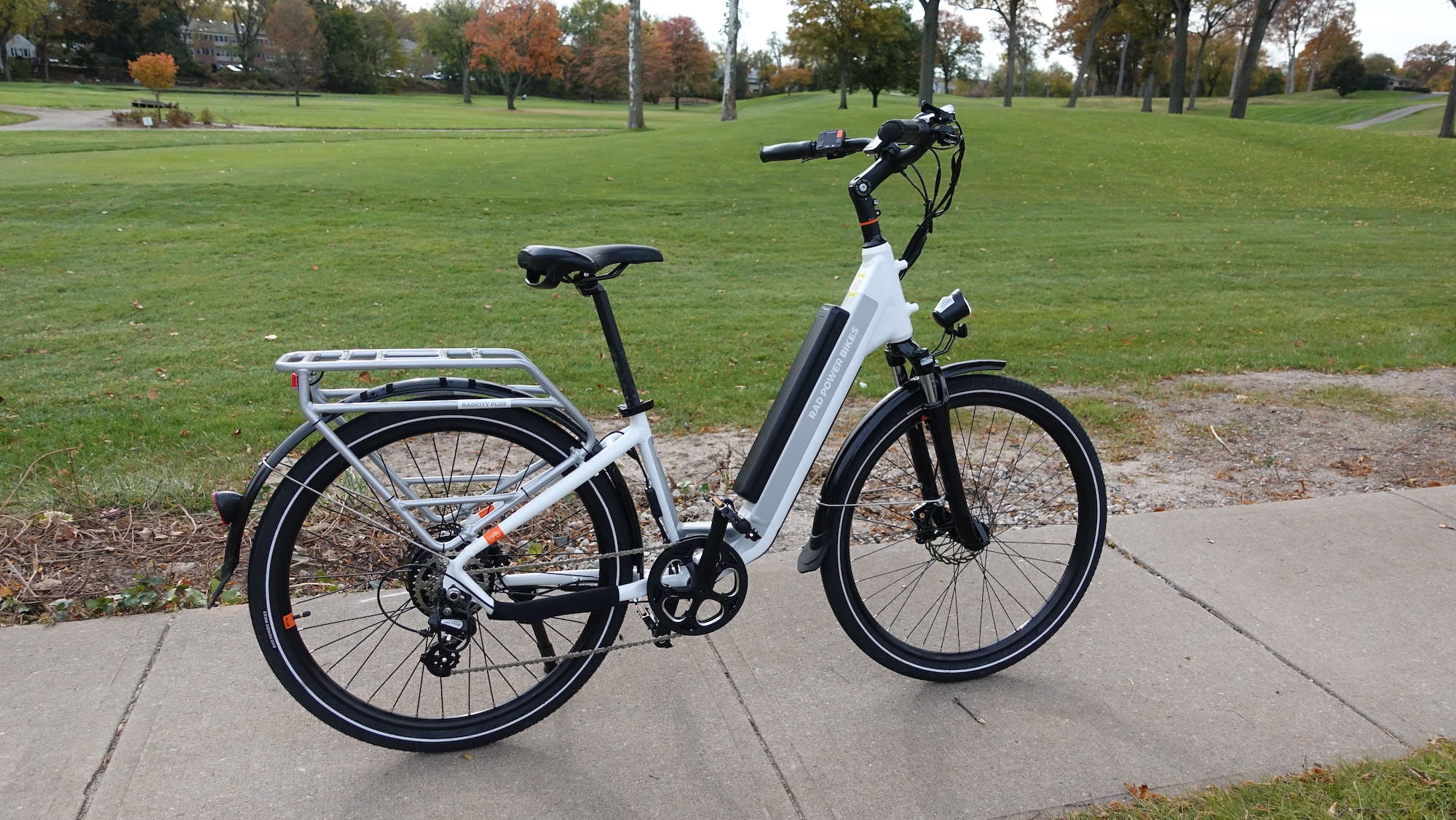Best budget electric bikes in 2025
Durable e-bikes under $1,500
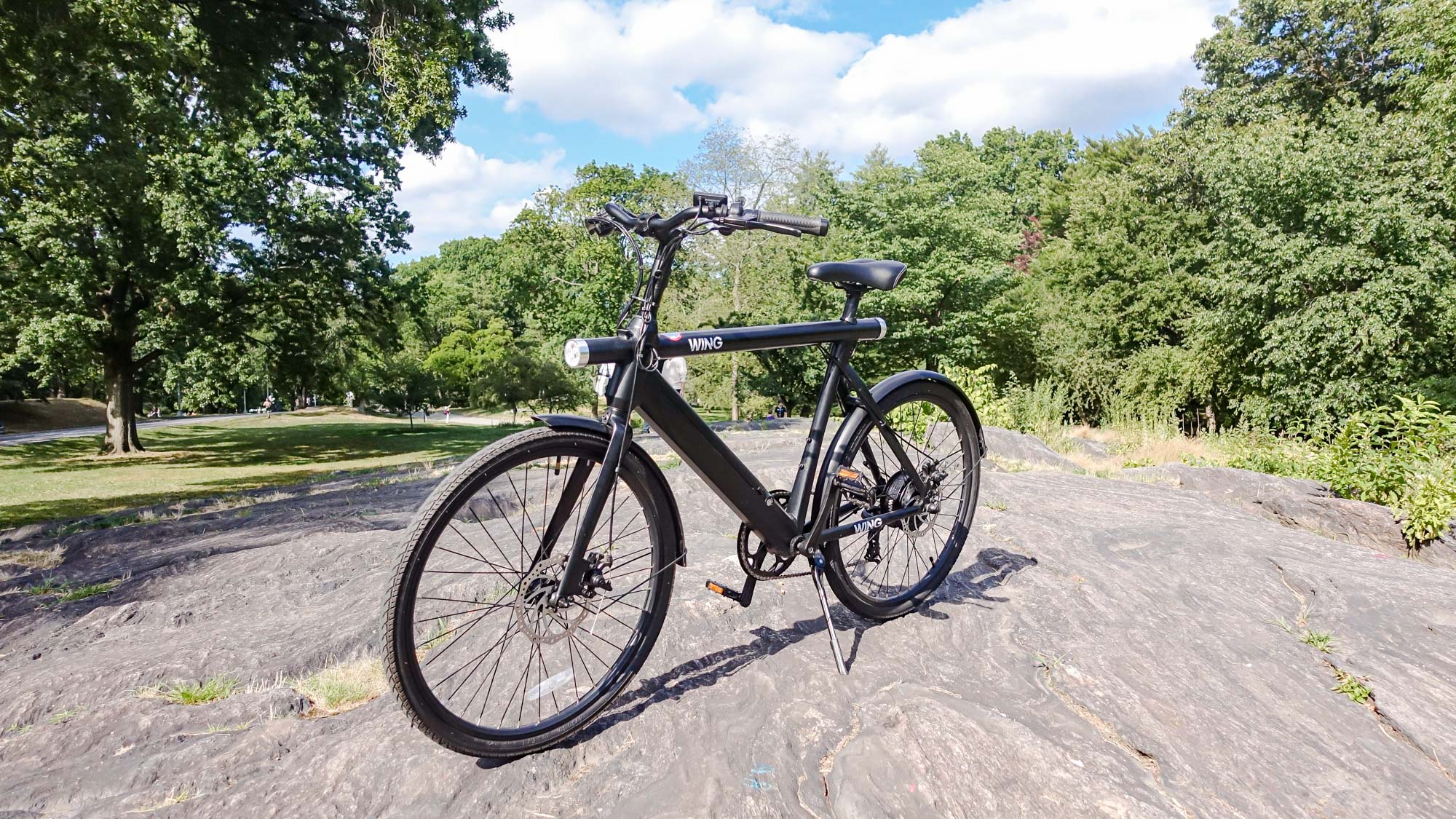
The best budget electric bikes are ideal if you want to take a ride without breaking the bank. But it's also important that they perform well, too, which is why we put them to the test to check for comfort, adjustability, battery life, and uphill performance.
They're an ideal entry point into e-bikes, especially as many of the best electric bikes can range up to thousands of dollars, and you may want to test out a more affordable option first while you get used to the experience.
From our time on the road, we felt that the Ride1Up Roadster V3, is the best budget electric bike overall, thanks to its comfortable ride and features.
Likewise, we were impressed with the Wing Freedom 2, which was a comfortable ride. But these aren't your only choices, as we've put together a range of budget electric bikes to suit leisurely rides about town, long distances, and crowded commutes.
Update, December 2025: Although Rad Power's electric bikes didn't often find their way onto our best budget e-bikes roundup, they were still some of our favorite bikes. But after recalls related to reports of battery fires and the late-2025 news that the company had filed for bankruptcy, we've decided not to recommend Rad Power's bikes, for now. Fortunately, there a load of other amazing budget-friendly bikes you can pick up (like those below) to commute or go out for fun rides.
The quick list
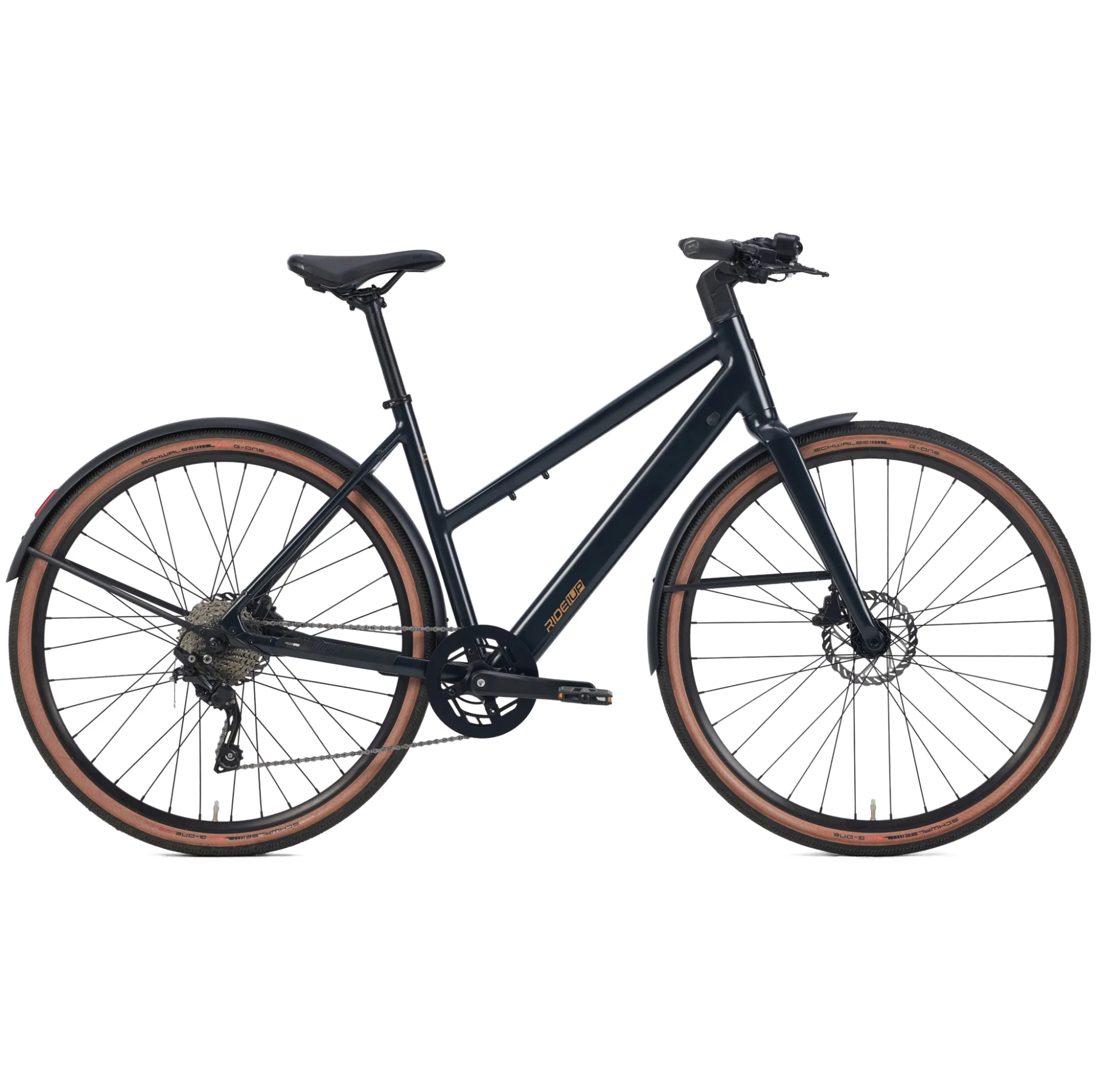
This lightweight and sleek e-bike blends in with its understated design, but delivers a zippy ride that can get you around town easily.
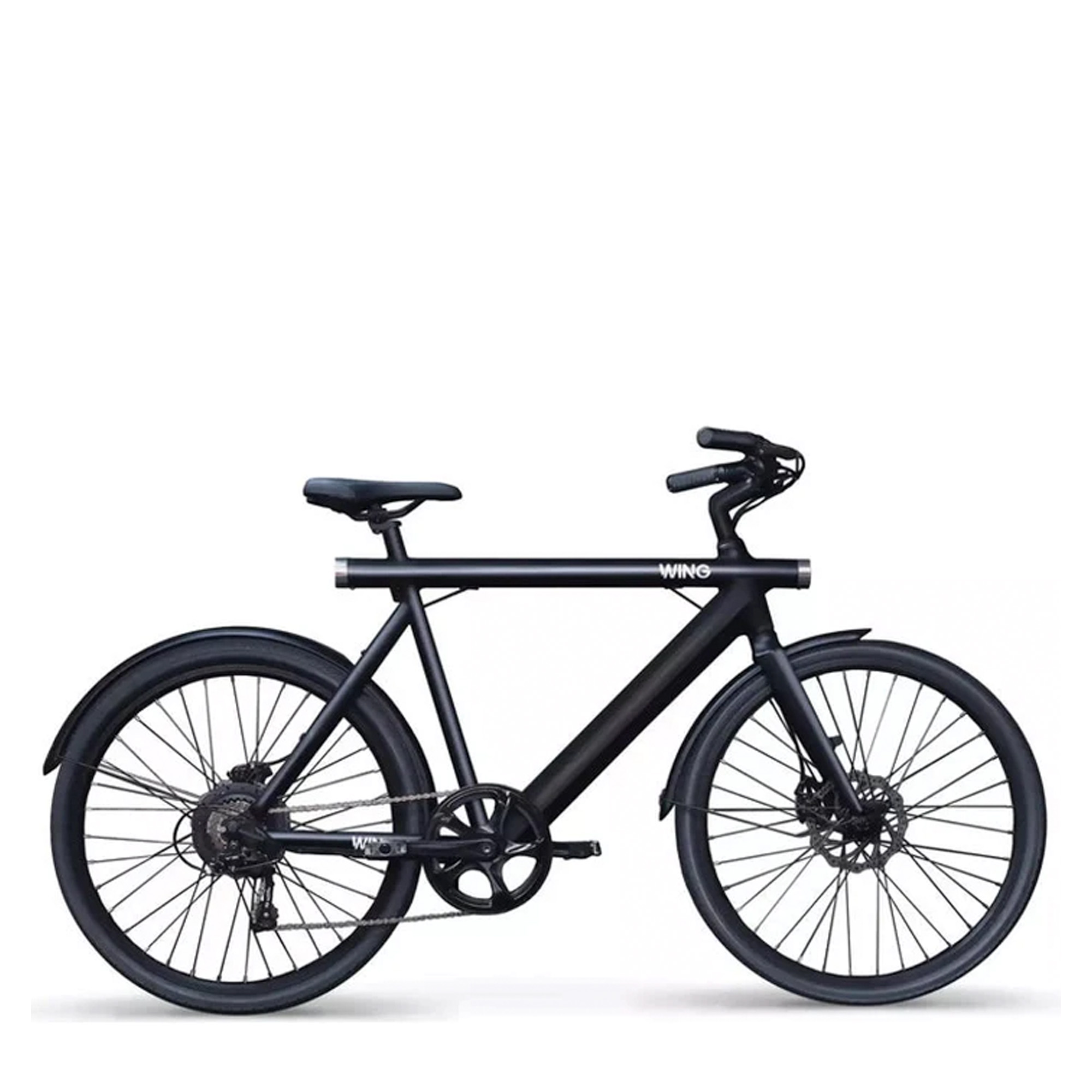
Hidden inside this bike is Apple FindMy, so you'll know where your bike is if it ever gets stolen. And, a built-in siren will also deter thieves.
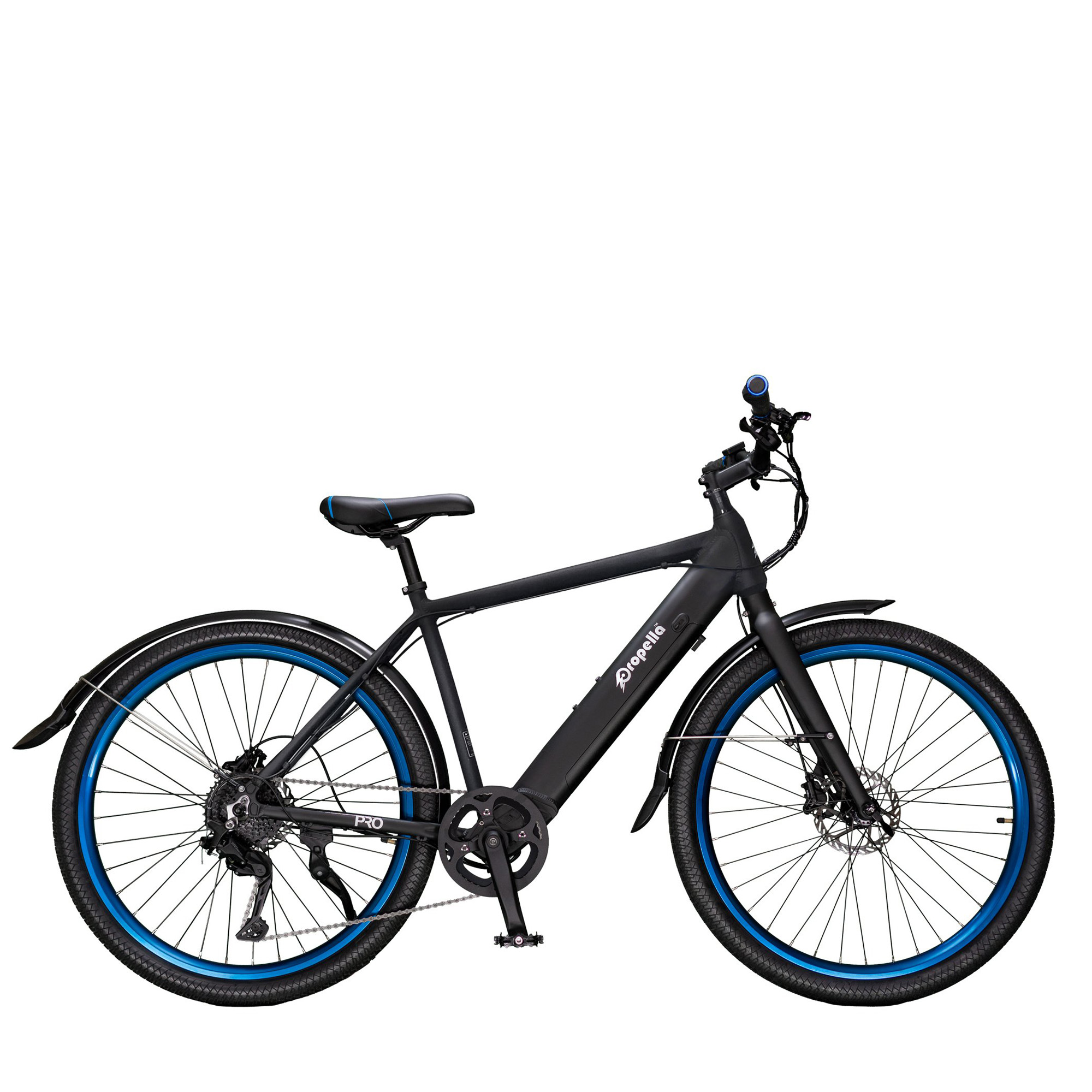
This model has adjustable handlebars to accommodate riders of varying sizes more easily than other e-bikes. It also has a lot of other great features for the price.
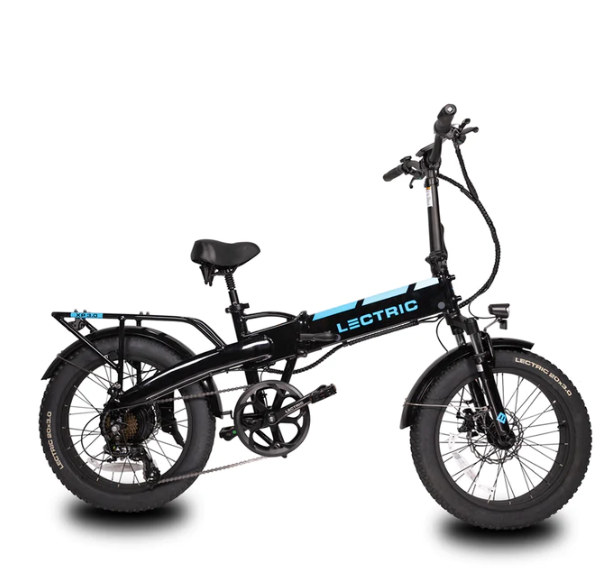
Looking for a bike that that can fit into small spaces? This folding model fits the bill, and its big, fat tires and great battery gives you the means to go just about anywhere.
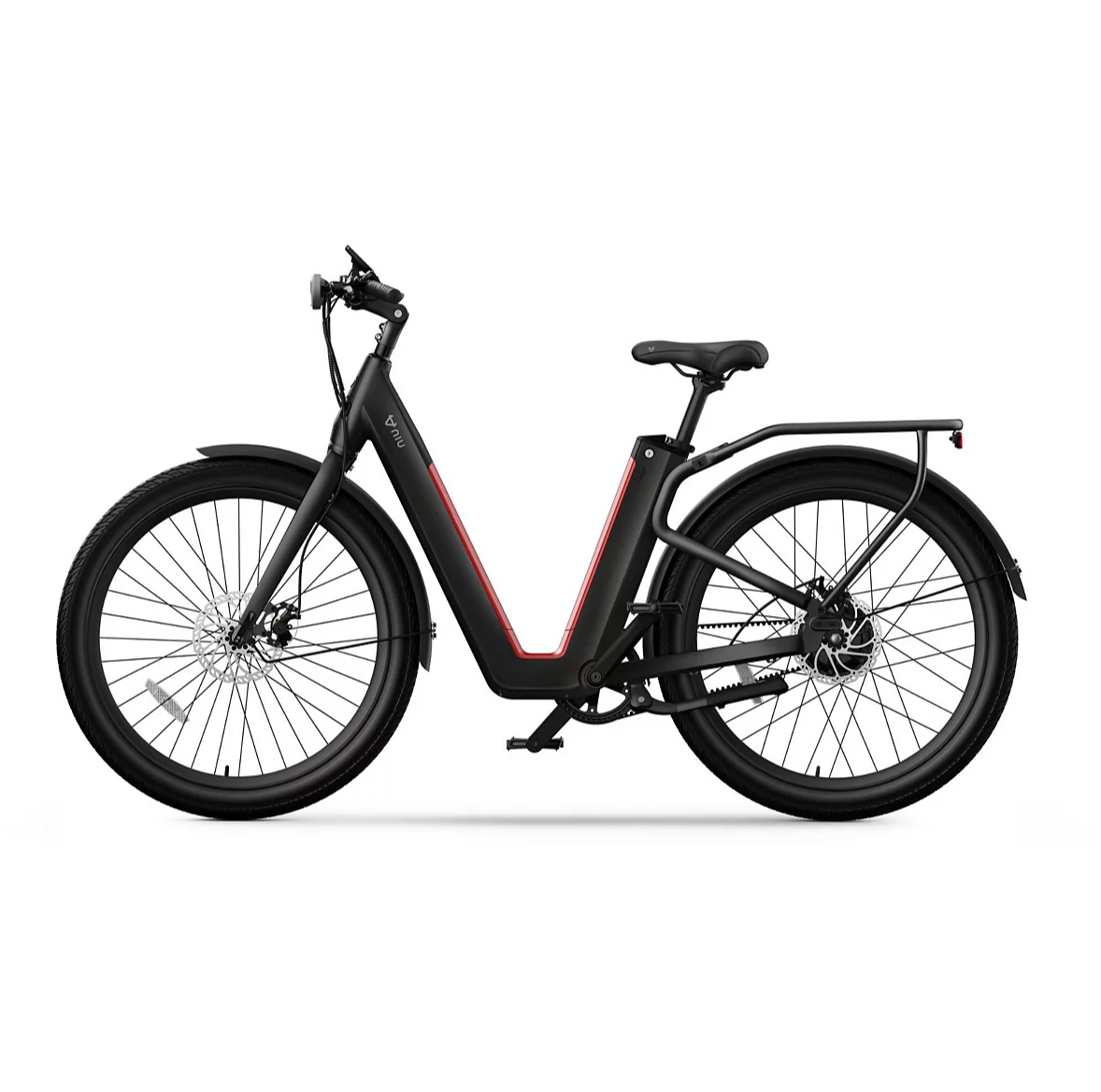
This budget e-bike packs two batteries into the frame, allowing for an massive 90-mile range. It's heavy, but it's also a lot of fun to ride, even for long distances.
The best budget electric bikes you can buy today
Why you can trust Tom's Guide
Best budget electric bike overall
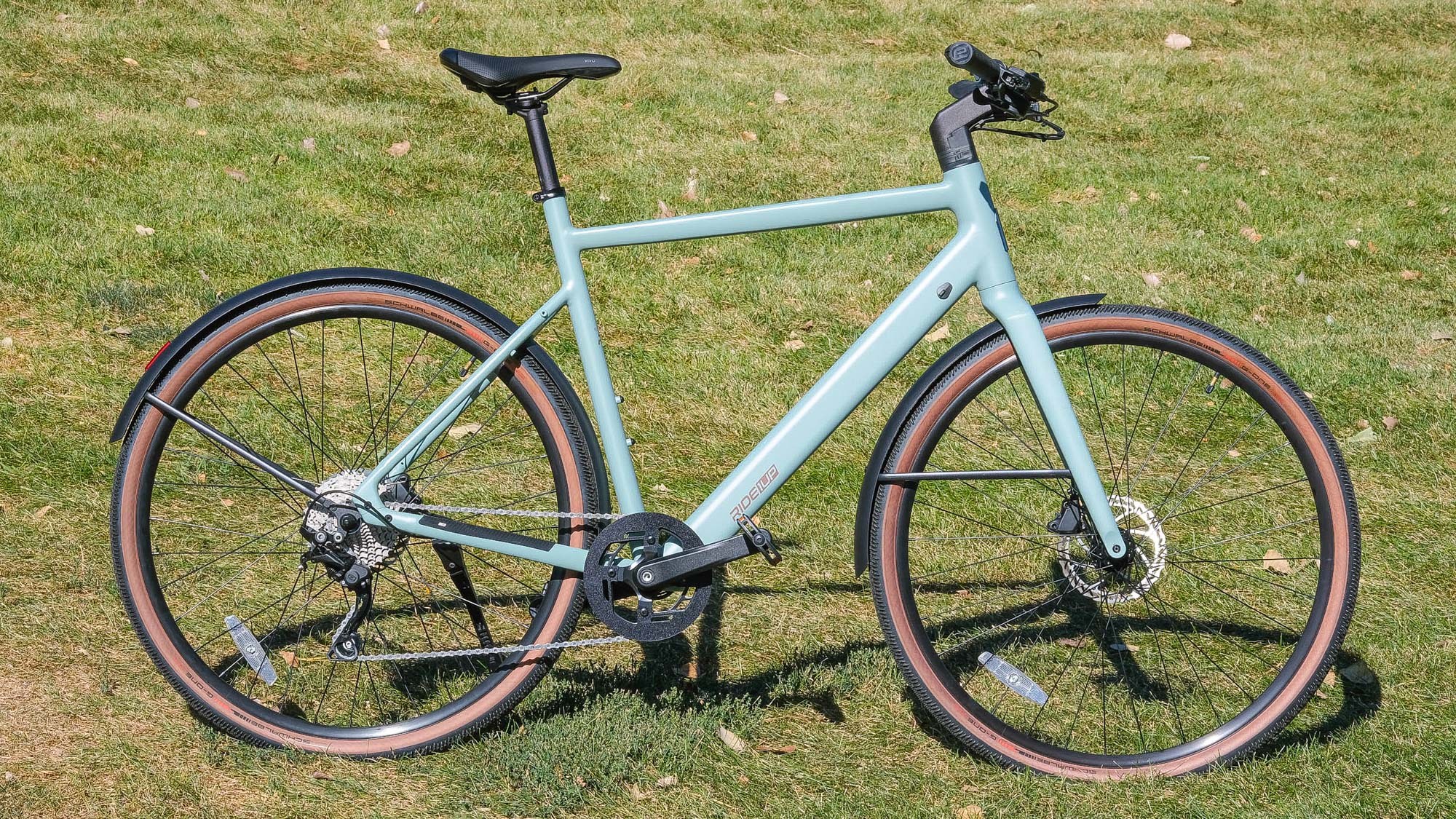
Specifications
Reasons to buy
Reasons to avoid
The Ride1Up Roadster V3 is the follow up to the now-discontinued Roadster V2, which was one of our favorite budget electric bikes for a long time. Fortunately, the V3 is a worthy upgrade that makes the bike easier and more fun to ride.
It's a little heavier than the V2 (39 vs 33 pounds) but can also reach a higher top assisted speed (28 vs 24mph) and lasts longer (40 vs 30 miles). The V3 also costs $200 more, but the performances upgrades are definitely worth the increase.
Like it's predecessor, the Roadster V3 makes for an excellent commuting e-bike — it even looks more like a traditional commuter bike you'd find in the parking lot at offices across the country.
The solid handling made it easy to navigate around tighter spaces and the motor gets you up to speed pretty quickly, in combination with the pedal-based torque sensor that changes the assist based on how you're pedaling.
The 45mm tires are versatile too, and worked just as well on roads, sidewalks, and light dirt paths. We also tried start from a stop on a steep hill, and the bike didn't struggle. It all sounds great, and it is, but one area let's it down; the battery.
It's rated for up to 40 miles, but we found that after just five miles at high assist, the battery had drained an incredible 80% — far short of the brand's lowest range estimate of 20 miles.
If you like what the Ride1Up Roadster V3 offers, but want a bit more choice, the Propella 9S Pro comes in at a similar price, looks like a commuter bike, and a nine-speed drivetrain. But it maxes out at 20mph, instead of the Roadster V3's 28mph.
- Read our full Ride1Up Roadster V3 review
Best budget electric bike for comfort

Specifications
Reasons to buy
Reasons to avoid
No, it's not a VanMoof; the Wing Freedom 2 certainly bears more than a passing resemblance to the now-defunct electric bike that cost more than twice as much, making it a great and more budget-friendly alternative.
The long vertical tube at the top of the frame is similar to the way VanMoof approached its bikes, with the wires integrated inside. That is, until the handlebars, where they're exposed. But the Wing Freedom 2 has the upper hand when it comes to power, with a removeable battery you can switch out when it needs a charge.
The bike has a built-in LCD display to show your speed, pedal assist level and remaining battery life, but it's not as comprehensive as you'd find on a more premium model, and it has a monochrome design, rather than a more vibrant color screen. And, to keep the cost down, the bike has a cadence sensor in place of a torque sensor.
This means that it's slightly slower to add pedal-assist power, trailing by a second or two. It's still a good ride, but, like the Ride1Up Roadster V2, it makes it less suited to steep inclines. But it performed well as we toured around the streets of Manhattan and hills of Central Park with ease.
- Read our full Wing Freedom 2 review
Best adjustable budget electric bike
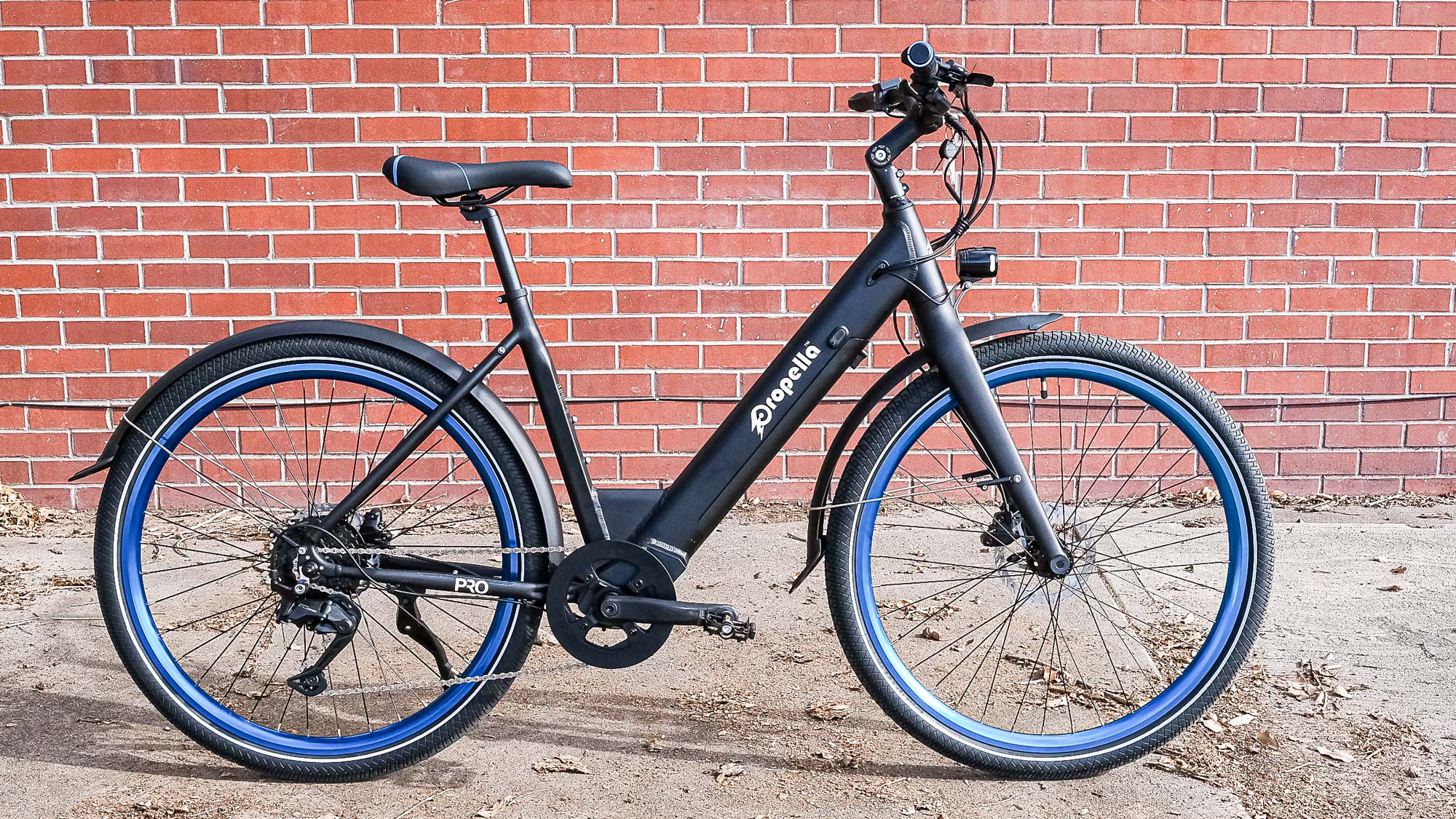
Specifications
Reasons to buy
Reasons to avoid
While taller riders may find the Propella 9S Pro a bit cramped, we like that this electric bike has adjustable handlebars, so those of smaller stature will have an easier time adapting the bike to their body. It also comes in a step-over or step-through design, further adding to your choices.
Apart from that, we found the 9S Pro V2 functional and fun to ride. Improvements to this model over the original include a torque sensor and a new motor that are much faster to engage once you start pedaling. And it's pretty powerful, too: We were able to get moving, even on steep hills, though the addition of a throttle wouldn't hurt. An even better improvement: The 9S Pro V2's removable battery is now integrated into its frame, which not only makes the bike look a lot nicer, but eliminates the annoying rattle of the original.
Like the previous model, the 9S Pro V2 has a headlight (but no taillight) and integrated fenders to keep mud off your clothes in wetter weather. And, it has hydraulic disc brakes, something you don't often see at this price.
- Read our full Propella 9S Pro V2 review
Best budget folding electric bike
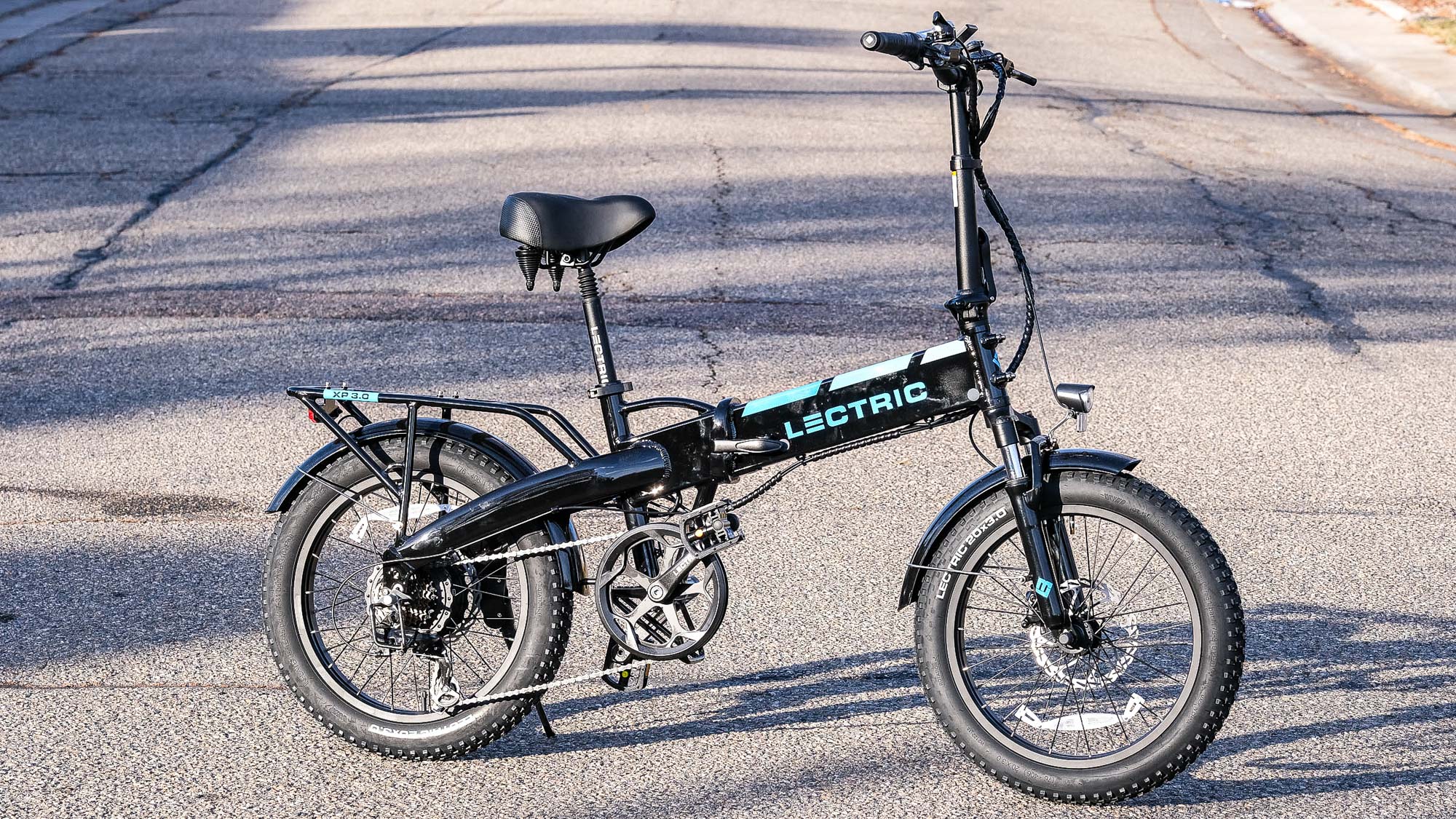
Specifications
Reasons to buy
Reasons to avoid
The best foldable electric bikes are great for those who need something that can fit on a train or bus, or don't have room in their apartment for a full-size model. However, the best electric folding bikes — Brompton and GoCycle, specifically — each cost more than $3,000, making them prohibitively expensive for many.
The Lectric XP 3.0 is the low-cost answer for those riders. This folding model starts at around $1,000, comes with a suspension fork (which we found unnecessary), big 3-inch tires, plenty of mounts for racks and other accessories, front and rear lights, and hydraulic disc brakes. It was a treat to ride, especially when we hit the throttle, and its excellent range meant more time between charges.
The biggest downside is that the XP 3.0 weighs a hefty 64 pounds, more than twice as much as other folding bikes, so it could be a real bear to get up and down stairs. We also wish that it held together securely when folded. A 5'11" rider found the XP 3.0 to be perfectly sized, but a taller 6'5" rider found things a tad bit cramped. But once you get going, it's a blast.
- Read our full Lectric XP 3.0 review
Best budget electric bike for long distances
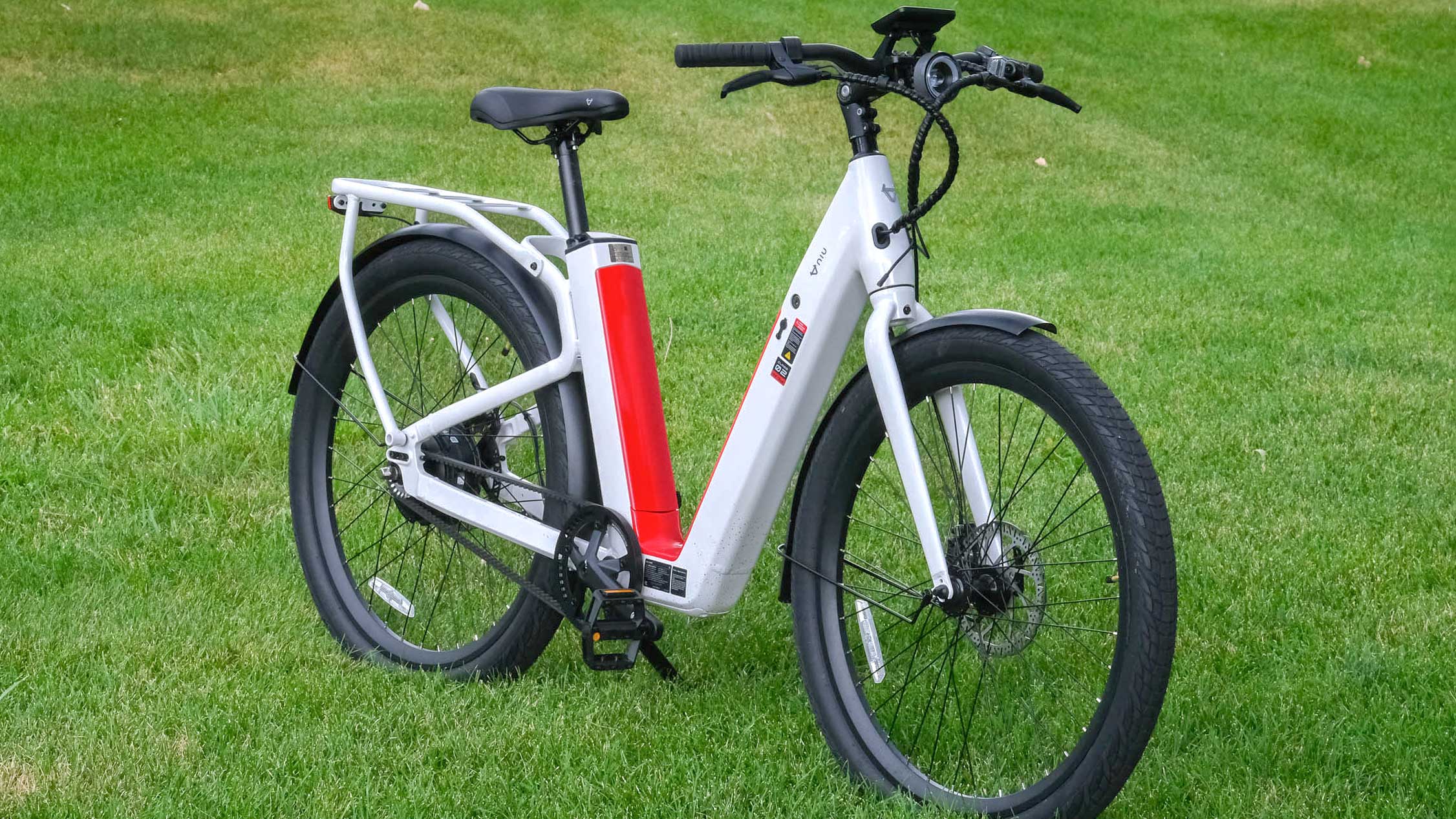
Specifications
Reasons to buy
Reasons to avoid
One compromise you have to make with many electric bikes — budget or not — is their range. The more pedal assist you use, the quicker you're going to drain its battery. The NIU BQi-C3 Pro is the best budget electric bike for those who have range anxiety, as it packs two batteries that can provide you as much as 90 miles before they run out of juice. And, in our testing, that claim looks pretty accurate, too.
Aside from its endurance, there are a lot of other niceties we found on this bike for the price. For starters, it has a carbon belt drive, which is not only quieter, but lasts longer and is easier to maintain. Then there's the mechanical disc brakes, front and rear lights, and a built-in rear rack. The bike's step-through design made it easy for both a 5' 11" rider and a 5' 3" rider to hop on and off.
The biggest knock against the bike is its weight — 70.5 pounds — most likely owing to its two batteries. Fortunately, we found the pedal assist from its 500W motor to be more than up to the task of getting us going wherever we wanted.
The BQi-C3's regular price is $2,199, but we often see it on sale, sometimes for as low as $1,299, so we recommend waiting until it's discounted.
- Read our full NIU BQi-C3 Pro review
Also tested
If none of these options quite hit the mark, or you're looking for the best electric bike under $500, here's our top budget pick:
Swytch Go
If you already own a manual bike, you may not want the extra expense of buying a dedicated e-bike. Instead, you can use this kit to electrify your existing bike from as little as $349. You won't get the same performance as you would from a full electric bike, but it's an elegant solution if you want to keep costs (and effort) down.
Read our full Swytch Go review
How to choose the best budget electric bike
If you're looking for a budget-friendly electric bike, generally under $1,500, then, you'll need to be prepared to make some compromises compared to the premium models that can range up to thousands of dollars.
However, there are some critical areas that you want to keep an eye on before you decide on a specific model. The most crucial is the motor. Assisted bikes have two sensors; one for cadence and one for torque.
Cadence sensors, which detect when the crankshaft is moving, are generally less expensive than torque sensors (those that detect the force on the crankshaft), and are found on most budget electric bikes. However, they're also slightly less accurate.
So, you may find that there's a slight delay between when you pedal and need assistance to when the motor kicks in. Plus, if you live in a hilly area, you may want to avoid bikes with a single gear, as these make it more challenging to do hill starts.
If you're buying a budget electric bike online, it's important to read many reviews (including ours) to see whether people rate the build quality. Though it's easier to assess this if you can make it to a showroom and give the bike a spin.
You also need to factor in that many companies ditch integrated lights to keep the cost down. If you'll be riding in dark or dim conditions, it's vital to stay well-lit, but you can always add some of the best bike lights later on.
How we test electric bikes
We test the budget electric bikes the same way we test all electric bikes — we put it through the same tests, which includes, of course, riding it around a lot. We gauge the bike's comfort, such as its seat, handlebars and grips, our posture when riding, and how easy everything — especially the seat — is to adjust.
Many electric bikes come fully assembled, but budget models often require you to attach a wheel, handlebar, or some other component. In those cases, we look at the ease with which you can put the bike together, how long it takes, and if the instructions are easy to follow.
While we don't expect budget electric bikes to perform as well as high-end models, they should still provide an enjoyable experience. So, we ride the bikes up hills to see how much assist their electric motors provide, and how fast they are to respond when we start pedaling; lower-quality models will take a longer time to engage, which makes for more difficult starts when going uphill.
In the course of testing an electric bike, we see how quickly the battery drains when riding in different conditions. We test this using pedal assist and, when available, throttle, to see how much the battery is impacted.
Last, we also look at what other features come with the bike — a large display, integrated lights, disc brakes, etc — and factor this in with its price to determine its rating.
FAQs
What is the difference between an e-bike and an electric bike?
An electric bike and e-bike both refer to the same thing; an electrically powered bicycle with a battery and motor.
Electric bikes are popular because they can reduce some of the effort required to cycle, especially up inclines. This makes them a good option if you want to reduce your reliance on other transport without feeling like you've done an intense workout.
So, if you want to cycle to work or into town to pick up groceries, an e-bike is a good option. Generally, they're more expensive than a regular bike, but depending on the cost and how often you plan to use it, they can work out a good deal in the long run, especially if they cut your commuting cost.
But as they became more mainstream over the past few years, electric bike became contracted to e-bike for ease. So that's why you often see the two terms used interchangeably.
Why are some e-bikes more expensive than others?
Like with most things, generally, the more you pay, the better the equipment. The same is true of electric bikes, although it's not quite a linear relationship and you can find high-quality e-bikes at the budget end, but with a few compromises.
The main thing that makes an electric bike more expensive than a traditional bike is the addition of a motor and battery. These electronic components help power the bike, so you can ride around without as much effort.
More powerful motors and higher capacity batteries tend to cost more, increasing the price of the bike. But if you don't need to travel up steep hills or ride long distances, an e-bike with a lower power motor and smaller battery might suit what you need.
And, like with standard pedal bikes, the materials play a factor in the cost. Although you're not likely to find an e-bike made purely of heavy steel, that metal is cheaper than carbon fiber, one of the lightest, toughest materials used in bike construction.
But it's also the most expensive, so a bike using mostly aluminum components will often be cheaper than a carbon fiber frame. And you'll also find that the cost varies with the bike's accessories and other features.
Some electric bikes have built-in cycle computers, or access to a companion smartphone app for you to track the bike's location and battery. As a rule, you'll usually pay more for bikes with these features.
Do e-bikes save you money?
Whether e-bikes save you money will depend on your circumstances and what you plan to do with your bike.
Electric bikes are, on the whole, more expensive than standard bicycles as they need motors and batteries alongside the usual bike parts. But, as with most products, a cheap electric bike can cost less than a premium road bike.
So there's a lot of variability in the initial upfront cost, but you will often need to spend more on an e-bike, especially once you factor in the power and battery life you need.
If you live in a hilly area and need to cover a of miles, you'll need to pay more for an e-bike that can power you up those steep hills and last long enough to get you to your destination.
Despite this, an electric bike may save you money. If you're hoping to ditch your car for your daily commute or short trips into town, it'll be cheaper per journey than the car.
The bike is far lighter than a car, requiring less power to get it moving. If you have an electric vehicle, the electric bike will need fewer (or shorter) charging sessions, and if you have a gas-powered car, you'll save on the expense of regular top ups.
Do you get exercise with an electric bike?
You do get some exercise with an electric bike, but less than with a regular bike. The e-bike's motor assists as you pedal, reducing the intensity of your rides — that's their main benefit.
So while you're unlikely to feel like you've done a workout at the end of an e-bike ride, if you're using the electric bike to reduce the amount of journeys you do in the car, you'll add more movement into your day.
Plus, you get the benefit of being outdoors, not stuck in traffic, and able to explore at a leisurely pace. Exercise is a valuable activity to improve your health and mobility, but there's also value in boosting your wellbeing.
What is the best electric bike under $500
If you're looking for an electric bike for less than $500, you're probably better off looking at a converter kit for your manual bike, which are often a lot more affordable.
Our top pick is the Swytch Go. The device was easy to install and has a 250W motor, giving you assistance when you need it, without the cost of buying a whole new bike.
One thing to bear in mind — you won't get the same performance as you would from a full electric bike, but it's an elegant solution if you want to keep costs (and effort) down.
Read our full Swytch Go review
Get instant access to breaking news, the hottest reviews, great deals and helpful tips.

Michael A. Prospero is the U.S. Editor-in-Chief for Tom’s Guide. He oversees all evergreen content and oversees the Homes, Smart Home, and Fitness/Wearables categories for the site. In his spare time, he also tests out the latest drones, electric scooters, and smart home gadgets, such as video doorbells. Before his tenure at Tom's Guide, he was the Reviews Editor for Laptop Magazine, a reporter at Fast Company, the Times of Trenton, and, many eons back, an intern at George magazine. He received his undergraduate degree from Boston College, where he worked on the campus newspaper The Heights, and then attended the Columbia University school of Journalism. When he’s not testing out the latest running watch, electric scooter, or skiing or training for a marathon, he’s probably using the latest sous vide machine, smoker, or pizza oven, to the delight — or chagrin — of his family.
- Jane McGuireFitness editor
- Dan Cavallari
